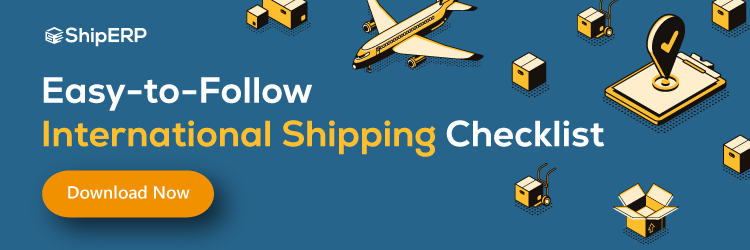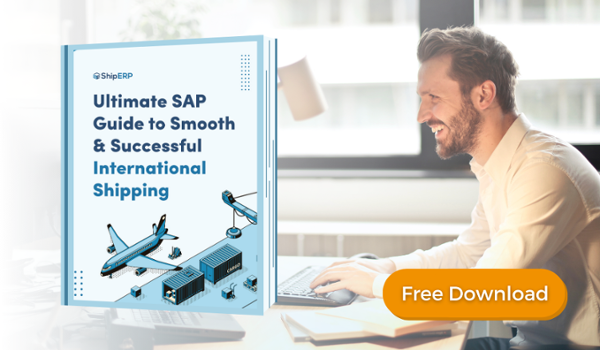
What Do You Need to Include in Your EEI Filing for Export Shipments?
So, what information does the U.S. Foreign Trade Regulations require your business to include in the electronic export information document when shipping your products internationally?
The Electronic Export Information or (EEI) is the electronic counterpart and replacement of the paper Shipper's Export Declaration (SED). Export data may be found in one place: the EEI. The information provided by EEI files assists the U.S. Customs and Borders Protection (CBP) in enforcing export restrictions and the Census Bureau in compiling trade statistics, both of which are vital to the United States government.
Filing Electronic Export Information (EEI): What is an EEI filing, and why do you need one?
Most export shipments worth more than $2,500 shipped from the same exporter to the same receiver on the same day must have electronic export information filed. This rule applies for shipments from the United States, Puerto Rico, and the Virgin Islands to other countries and shipments from the U.S. or Puerto Rico to the Virgin Islands.
EEI Filing is Not Required for the Following Shipments:
- Shipments from the United States to Canada, unless the item or commodity is subject to ITAR, raw diamonds, or needs an export license or authorization
- Imports destined for American Samoa, Guam, the Commonwealth of the Northern Mariana Islands, the Howland Islands, and Wake Island
- Imports and exports to the United States and Puerto Rico from the United States Virgin Islands
Before shipping your export, please note that:
Exporters should obtain a Schedule B number for the item they want to transport before exporting it out of the United States. The Schedule B number serves as a means of tracking the shipments. Any shipment containing containers or bags and items worth more than $2,500 must have the EEI filed by the seller and the ITN (International Transaction Number provided).
The ITN serves as documentation of submission and receipt of verification that the EEI was approved in the Automated Export System (AES). For the shipping company and CBP to be aware of your EEI filing, include the ITN in the contract of carriage (bills of lading) and SLI (Shipper's Letter of Instruction).
It's only necessary to submit an EEI if the total shipment worth under Schedule B exceeds $2,500, or an exporting licensing is required if you're delivering the products via the U.S. Postal Service. In such cases, take the ITN or exemption citation to the local post office and mail it. The following filing options are available when shipping through a logistics company:
If you ship through a forwarder, you have three filing options:
- self-filing via ACE (free of charge)
- giving the forwarder a Power of Attorney (POA) to submit the EEI on your behalf (fees apply), or
- delivering your company's printed EEI or commercial invoice.
Automated Export and EEI Filing Systems
Any time an AES filing is necessary, EEI information must be submitted via AES. Exporters and shipping lines used to submit their EEI reports using the Census Bureau's AESDirect online portal.
CBP's Automated Commercial Environment (ACE) now includes the new AES, which replaced the previous AESDirect system discontinued in April 2016. With the switch to ACE, the government hopes to simplify import and export processes while also making it easier to comply with regulations by providing a single point of contact for all business dealings.
The exporter or USPPI is generally responsible for submitting an EEI via AESDirect. In addition, the USPPI may authorize their freight forwarder or another party to draft and submit the EEI on their behalf. It is the responsibility of the Foreign Principal Party in Interest or final consignee to give written authorization or Power of Attorney for the submission of the EEI to the USPPI OR a United States Authorized Agent for routed export transactions.
10 Details You Need to File Your EEI
According to the United States Census and AES webpages, the following information is needed for EEI filings:
- Employer Identification Number or Tax ID for the principal party in interest in the United States (if the shipper is a corporation)
- The number assigned to individuals by the Social Security Administration (if the shipper is an individual)
- Entities Involved in that Process (to indicate whether the sender or receiver of the goods is unrelated or subsidiaries of the same company)
- International Air Waybill or Transportation Reference Number
- The final recipient of the cargo, also known as the final consignee, must be identified (if the ultimate consignee is different from the consignee on the air waybill)
- Country of Ultimate Destination
- If you're in AES, you may choose between internal and external (whether the merchandise is a domestic or foreign commodity)
- Schedule B Identification Number (6-digit Commodity Classification Number in AES)
- Value or cost/price of goods sold
- ECCN - Export Control Classification Number (required for commodities shipped under an export license or license exception symbol)
AESDirect submissions for certain export transactions may also need to include conditional and data in addition to those mentioned above. In the end, the information you want is dependent on your cargo type, the goods being exported, and the recipient country.
For help on your AES optimization, reach out to us! We help our clients with automation and efficiency in their business processes. We are especially helpful with shipping and compliance in the context of SAP ERP integrations for our enterprise clients.




